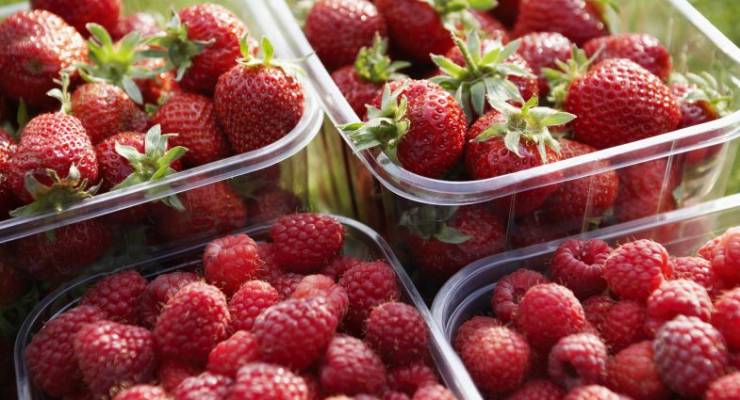
Strawberries across the country were recalled by retailers this week, after a reportedly “disgruntled former employee” on a farm in Southern Queensland placed sewing needles into the fruit. So far, three incidents of people encountering needles in strawberries have been reported to police.
Police and health authorities urged consumers to dispose of any punnets produced by the brands Berrylicious and Berry Obsession, but Strawberries Australia had other advice. According to their industry development officer Jennifer Rowling, the needles were an isolated incident, and any harm could be avoided by simply cutting the fruit in half.
“As far as we’re concerned, our growers take pride in what they produce”, Rowling said.
A statement from Growcom, the industry body representing Queensland horticulture growers also urged consumers to have some “perspective” on the situation.
“Fruit currently available for purchase is safe, and we urge consumers to continue supporting the strawberry industry,” Growcom Chief Advocate Rachel Mackenzie said.
But the growers associations have good reason to be concerned about the impact of consumers turning off strawberries. The recall could spell further trouble for embattled Queensland strawberry farmers, who, following an unseasonably warm winter, are currently struggling with the biggest glut of strawberries in the state’s history, which has led to lower prices, and dwindling profits.
Tough season
In response to the glut, retailers dropped strawberry prices — Coles were selling 250 gram punnets for just $1 in late August. Meanwhile, growers were being told by wholesalers that only the largest strawberries would be accepted, forcing tonnes of smaller fruit to be thrown out.
“We are throwing away great quality fruit because of its size and there’s people starving all over the world it just makes you scratch your head,” strawberry farmer Amanda Schultz said, in a video posted on Facebook last month.
While an abundance of strawberries and lower prices might be a gift for consumers, they have severely hurt an already struggling industry. According to Dr Kithsiri Dassanayake, an agriculture expert at the University of Southern Queensland, this has created a situation where, for some growers, market prices are less than costs of production.
“That will be bad for growers, and some may have to go out of business,” Dassanayake said.
The squeeze is already being felt among Queensland’s strawberry growers. Earlier this year, Twist Brothers, who had been in the strawberry business for almost half a century, shut their doors. Last month, president of the Queensland branch of Strawberries Australia Luigi Coco expressed concerns that some other growers would struggle to survive the season.
The causes of the glut are complex — warmer winters, more productive crops, and the practices of big retailers have all played their part.
According to Dassanayake, the glut could be caused by a combination of new strawberry varieties, as well as higher CO2 levels. “The new varieties being planted which are high-yielding and larger in size are more responsive to an increase in CO2 emissions,” Dassanayake told Crikey.
While some farmers may fear the needle attack could stop consumers buying strawberries, the contamination crisis is unlikely to make a major impact on growers’ woes.
Dr Gary Mortimer, an expert in food retailing from the Queensland University of Technology, believes that while the contamination crisis may cause some short-term anxiety among consumers, it will, on the whole, be a “blip on the radar” for the strawberry industry.
“I think the impacts will be sharp and sudden, but not long term,” Mortimer said.
By the end of the week, the strawberries on our shelves will all be safe to eat. Consumers will soon continue buying them in droves. But as prices stay low, and winters continue to get warmer, growers have more to think about.








Could our agric experts comment on the claimed benefit of “higher CO2 levels”, please? We dont want to give the excuse for emitting if untrue.
Wait until Trump’s sanctions and the backlash comes home to roost
The only problem with strawberries that I really care about is that they almost always taste horrible — sour and hard. They’re now available year-round, whereas when I was a child strawberry season lasted a few weeks at most — but it’s been a direct trade-off. Availability has become perpetual; taste has become unbearable.
The bigger they are the nastier.
When they can’t be sucked they are not worth eating.
“…I think the impacts will be sharp and sudden…” not the best choice of words in a story about needles in fruit.
““We are throwing away great quality fruit because of its size and there’s people starving all over the world it just makes you scratch your head,” strawberry farmer Amanda Schultz said, in a video posted on Facebook last month.”
Stop scratching your head and ship them off to the starving people. Well duh. Who’d’a thunk it?
Yes, I realise it is not the farmers’ role to do this. That responsibility falls to “the powers that be”.
“Against stupidity, the gods themselves, contend in vain” (ASTGTCIV)
Can’t blame the individuals working in the system mate.
It’s rubbish that food is wasted rather than sent to the hungry poor of the world, but the hungry poor don’t have any money to pay for the food or they wouldn’t be hungry.
Easy to sit here and say he should bankrupt himself to feed those hungry, but I doubt very much that you are doing that yourself…